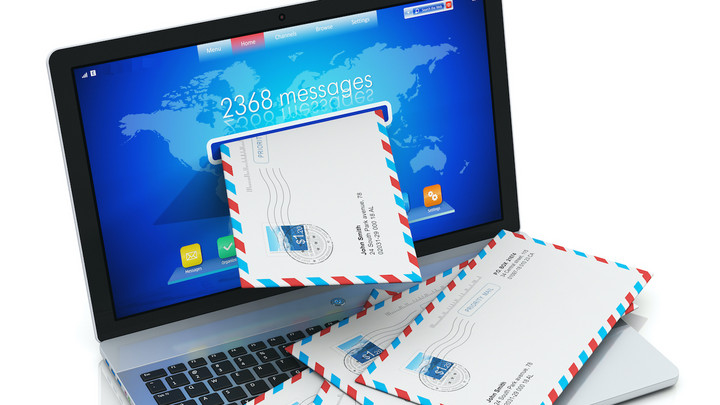Delivery and Deliverability: The Silver Bullet to Email Marketing Success?
Alice Cornell from Change.org and Tamara Bond from dotdigital debunk the biggest myths in the email marketing industry and offer tips on consistently reaching the inbox.

© scanrail | istockphoto.com
Tamara and Alice spoke recently as part of the virtual CSA Email Summit 2020 - find further upcoming informative webinars about email marketing and best practices here.
The pandemic is giving many of us the opportunity to ponder some of life’s big questions. Yes, what is the difference between delivery and deliverability?
Email delivery and deliverability are different but closely related, and one can have an impact on the other.
Delivery is managing the transmission of an email from the sending mailserver to the receiving mailserver to optimize speed and success. A connection is established, data is relayed, and the outcomes of the SMTP transaction are success (mail accepted or queued for delivery), deferral (try again later), or failure (mail rejected).
Deliverability is understanding what happens to an email after it passes through the receiving mailserver. It’s the art of reaching the inbox (whether primary, focused, or an inbox tab) where the recipient will actually see the email, as opposed to landing in the junk/spam folder.
Let’s address some common myths around both.
Mail is an instant medium
So, press send and your mail lands in your recipient’s inbox, right? In so many cases, actually, no; there are many reasons that a mail might not immediately reach your recipient. On the whole, mail is super-fast, but mailbox providers (MBPs) all have different thresholds on the amount of mail they will accept and the rate they will accept it at. These rate limits can be dependent on many factors, including content, engagement, and reputation; the better your reputation, the faster and the higher the volume you can have mail delivered.
A 250OK success message doesn’t necessarily mean delivery; there are still layers of filtering, security, queuing, and infrastructure to get through, and of course once the mail passes these, will it actually reach the inbox? According to a recent study, one in six mails land in the spam folder, which means the recipient may not see your mail, or if they do, it may reflect negatively on your brand. So, it’s definitely not as straightforward as “press send, have email delivered”, but implementing best practice on the delivery and the deliverability side can set your program up for success.
ESPs control deliverability
A common misconception is that the Email Service Provider (ESP) controls whether mail delivers to the inbox. Actually, all the levers to ensure inbox delivery are in the hands of the sender (with help from their ESP). ESPs do not have a special batphone hotline to the MBPs where they can advocate for their client as a “good sender”. MBPs are fighting a constant tidal wave of spam every day and it is imperative that they protect their users from it. This means they rely on their users to indicate if mail is spam or not via positive and negative engagement.
MBPs have done a great job blocking pure spam and are now continuously innovating to better identify what mail their users actually want to receive. Deliverability is about avoiding what MBPs consider ‘spammy’ by focusing on recipient engagement to provide strong indicators that your mail is wanted and should land in the inbox.
This is why it is so important to warm new IPs or domains, by ramping traffic up on them slowly so that you can build a good reputation, and to keep your sending infrastructure consistent. Moving to new IPs may solve deliverability issues temporarily, but poor sending practices will quickly build the same poor reputation in a new sending environment.
Set it and forget it
Delivery and deliverability are an ever-changing landscape. Even if you find the perfect formula for right now, it will have changed in three months – or three weeks, or three days. MBPs are constantly shifting the goalposts to stay ahead of spammers and provide users with the best inbox experience, and the interests of recipients themselves are always changing.
For example, after initially configuring an outbound bulk email server, we cannot leave it and expect email to be relayed optimally without change. Fast, successful delivery requires technical management to ensure that limits set by MBPs are being respected and lessons are learned from the information in SMTP error messages.
It may seem impossible, but recipients can be even more fickle than MBPs. Just because you love the email you send, doesn’t mean recipients are going to feel the same way. Recipient behavior evolves over time – yes, three months ago they were super into microwave ovens, but now they have bought one and don’t care about them anymore. Experimentation and analyzing the feedback in the form of engagement data is key here. Test everything – cadence, content, subject line... And while testing, always focus on the ultimate goal for that particular mailstream. Engagement doesn’t just mean inbox placement; engagement means conversions.
Everybody else does it
Dedicated IPs
Dedicated IPs are not the silver bullet that will guarantee inbox placement (spoiler alert: there is no silver bullet for guaranteeing inbox placement), and they are definitely not the right fit for every sender. Warming and maintaining dedicated IPs requires consistent, high volume, near-daily sending to a high proportion of engaged recipients, which is not always easy, and so shared IPs may be the solution.
Although dedicated IPs do give you full control, reputation is increasingly tied to the sending domain, not IPs. Brands can use their own domains to build sender reputation, and see the same or better performance on well-managed shared IPs.
If you’re considering shared IPs, it’s important that your ESP:
● has a good vetting process for clients
● proactively manages their shared IPs
● supports custom DKIM, to make sure your reputation is truly separated from the herd
Ultimately, when it comes to dedicated vs shared IPs, you need to choose what’s best for your business.
Just send more mail!
Sometimes email is a victim of its own success; it is versatile, fast, effective, and provides great ROI, BUT over-mailing unengaged users is a key driver for deliverability issues, especially if your data acquisition isn’t tip-top. It is crucial to strike a balance between reaching your users at a cadence that gives them the opportunity to engage, without overwhelming them. The mantra “right message, right person, right time” is still very true. It is easy to see a database as just a list of email addresses, but each address represents a unique user and gives you the chance to communicate with them.
Segmenting and sending less mail to inactive users and more to active can lead to impressive results, happier users and excellent delivery and deliverability.
Tamara Bond is the Delivery Operations Manager at dotdigital and has been tinkering with outbound mailservers and advising on inbox placement for over 7 years. She is well known in the industry for her passion, dynamism, and eccentricity when sharing her technical expertise. Tam knows that a holistic and data driven approach is required to continuously improve email delivery, and particularly enjoys collaborating with deliverability and compliance experts to maximize delivery and inbox placement.
Alice Cornell is Director of Email Deliverability at Change.org. After 18 years working in digital messaging for global corporations, she now works with the world’s biggest platform for social change, using email to enable over 300 million users across the world make the change they want to see.
Please note: The opinions expressed in Industry Insights published by dotmagazine are the author’s own and do not reflect the view of the publisher, eco – Association of the Internet Industry.







